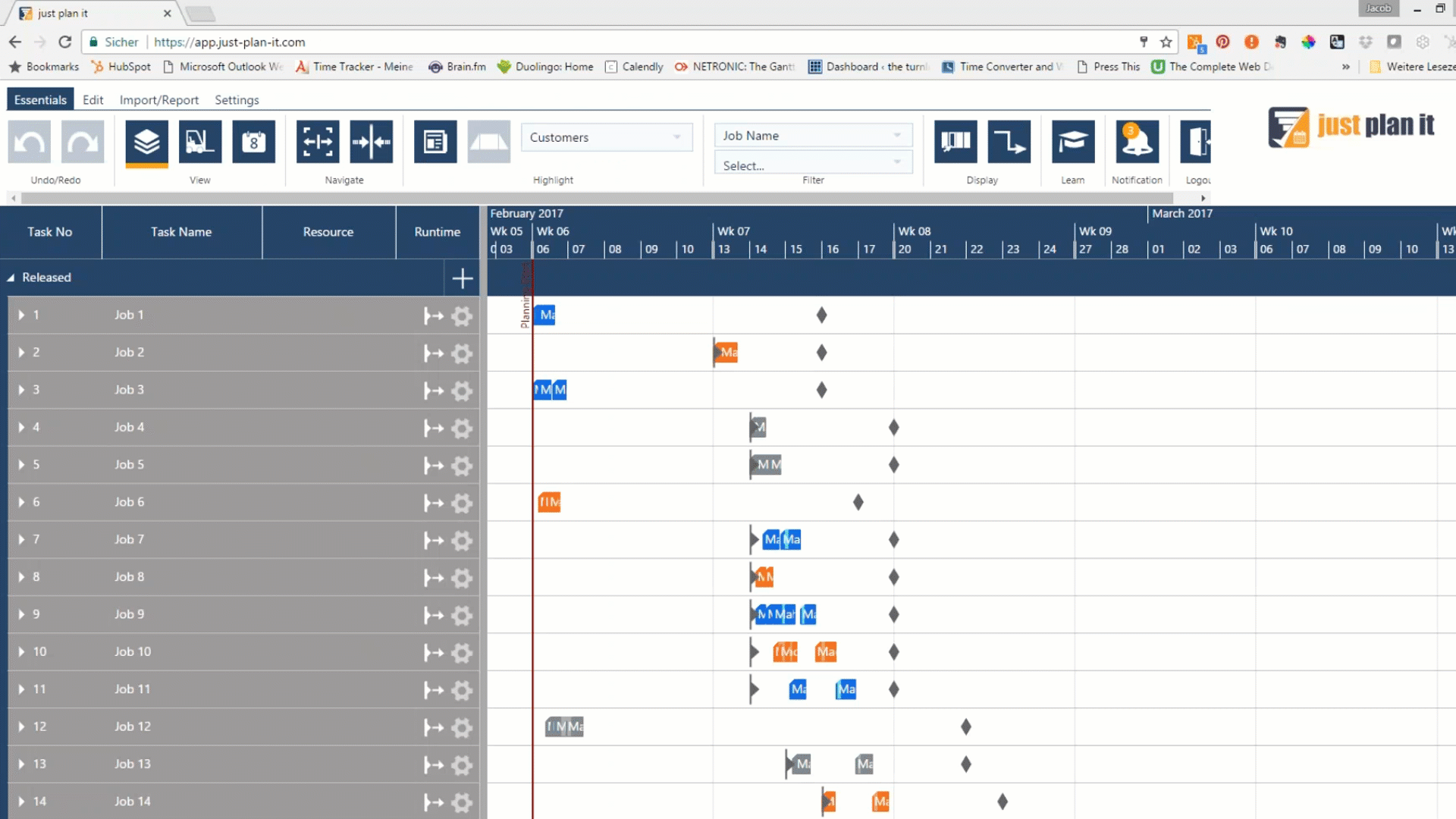Menu

One of the most underrated and misunderstood aspects of visual scheduling software is the ability to either drill down or pan out quickly and effectively across large amounts of data. However, only having the ability to do something doesn't mean it's going to automatically bring value. The value comes in discovering how to use it and in making that discovery a habit.
The focus of this blog post is to break down the ways in which adjusting the resolution of your visual data effectively changes your perspective, and the amount of relevant data shown. This, in turn, unlocks the vast reservoir of value that lives within your data and unleashes your planning agility.
Imagine you are a city planner considering the plan for a new metropolis or an author trying to write her next book. One option would be to start with the very first building or word and move forward but this would certainly not be the most effective or efficient approach. Another approach would be get a higher level overview of the project and what it entails and lay it out before diving in. This broad overview is critical in understanding how to build your city or how to write your book and the same applies in visual scheduling software.
You are afforded through a visual schedule the ability to see all your planning data in a given time frame at one glance. Once this time frame is determined you can identify quickly the general flow of your schedule. This high level graphical view is fundamentally different from a tabular view in the way it presents large sets of information.
Of course as a city planner or writer it's also necessary to get detailed sometimes and this is once again true for scheduling.
The beauty here being that within a matter of seconds your visual scheduling software can allow you to go from looking at production orders or projects over the course of months and years, to minutes and even seconds in a given day. Nothing tabular can deliver such agile variability in data viewing.
It's also important to remember that just because you can drill down into such small time intervals, it does not mean that it is always wise to do so. We all know the saying can't see the forest for all the trees and that certainly holds true here. Maintaining a high level overview of your data allows you to know when it makes sense to drill down and take a deeper look - which brings about the final point.
You've now read about the broad overview as well as the gain in getting granular and now it's imperative to talk about the most critical of all: the habit of zoom.
"It is not the single action of zooming in or out which gives visual scheduling its immense value. The value lives in the agility, borne out of the ability, which allows the user to effectively and quickly decide when to zoom in or out."
In essence, knowing when to use the agility of your mouse and the software to your greatest scheduling advantage to zoom, not only in but also out, will yield the greatest value.
Take the below example in just plan it for what the flexibility of zoom looks like.

And how do you know when to zoom in or out?
The honest answer is: it depends. It depends on your type of business and data. This may seem like an unsatisfactory answer but wait, the reward in all of this comes in that you can learn the habit of zoom easiest by one easy method. Simply understanding your data.
And how do you take the first step to understanding your data?
By getting it laid out in a visual scheduling software.
Why not take the next five minutes to see what I mean?
just plan it is a production scheduling software plus scheduling tools & best practices to help high-mix low-volume make-to-order manufacturers gain transparency and control over their shop operations. The software plus its methodology is used by thousands of people around the globe. They consistently achieve improved on-time deliveries, shorter lead times, and better utilization of their resources.
As just plan it is not just software, but a lot of processes and best practices, we recommend that you start with an exploratory meeting. If we agree that there is a fit between your requirements and our approach, we'll build a prototype for you.
Hence, it all starts with a meeting. Book that meeting now.
These Stories on Scheduling Best Practices
Made with by BOYUM IT SOLUTIONS GmbH (Copyright © 2024) Read our Privacy Policy & Terms of Service
No Comments Yet
Let us know what you think